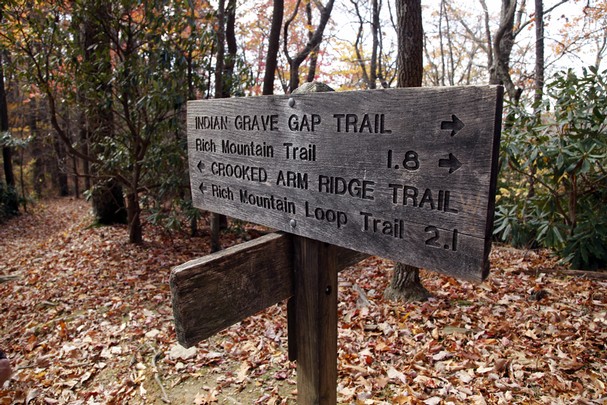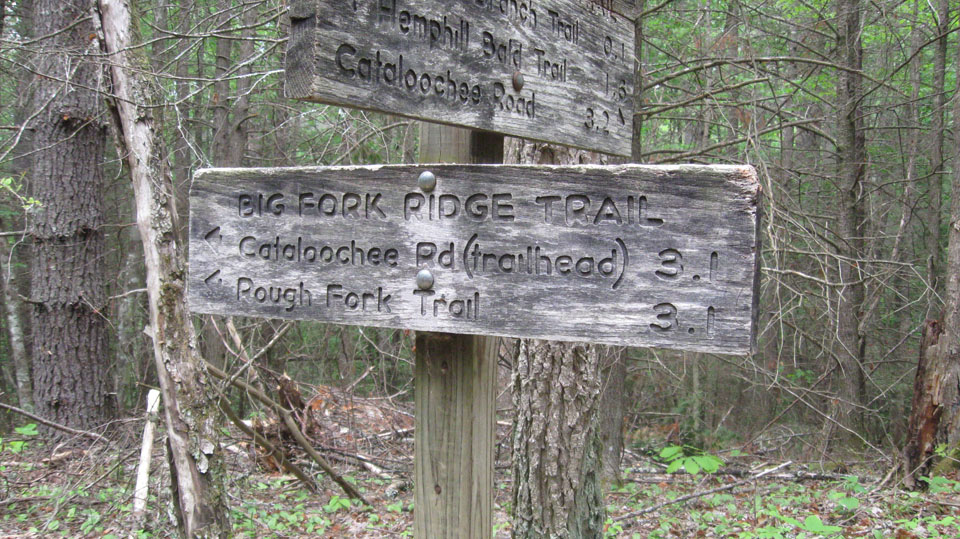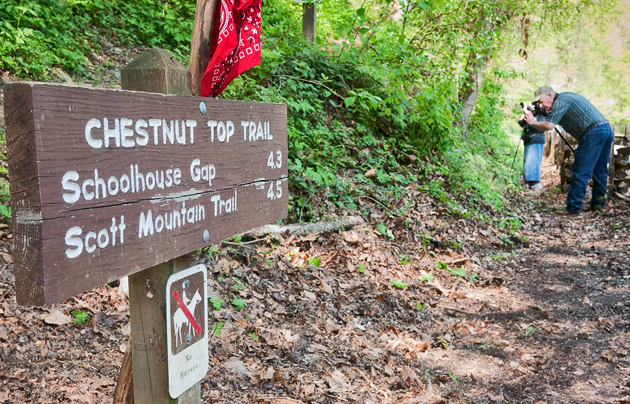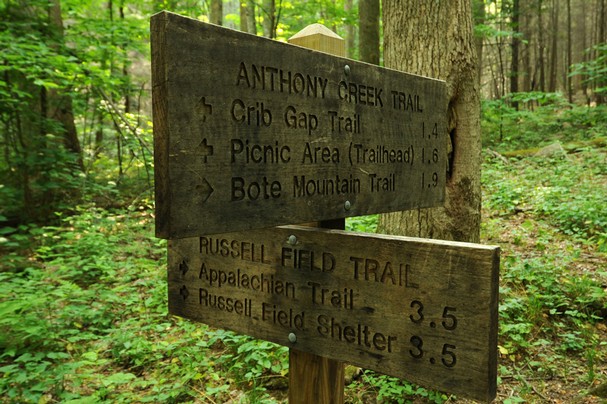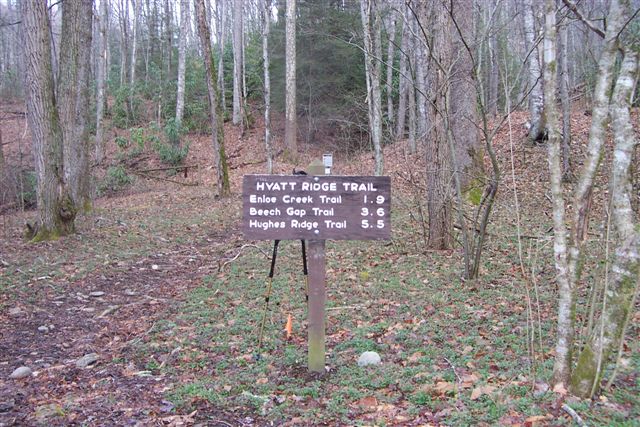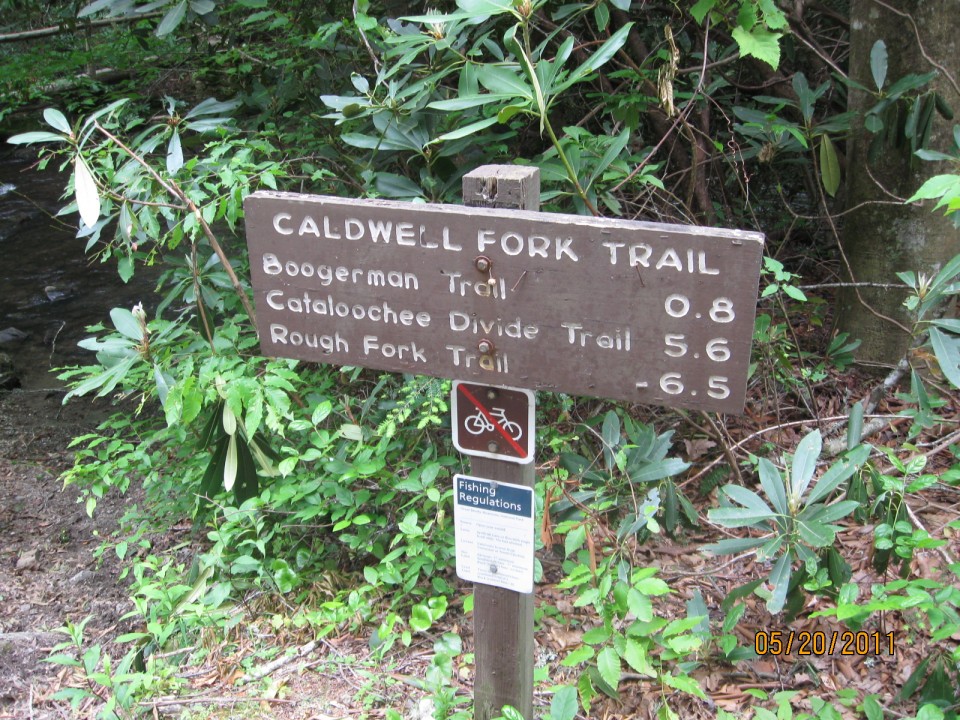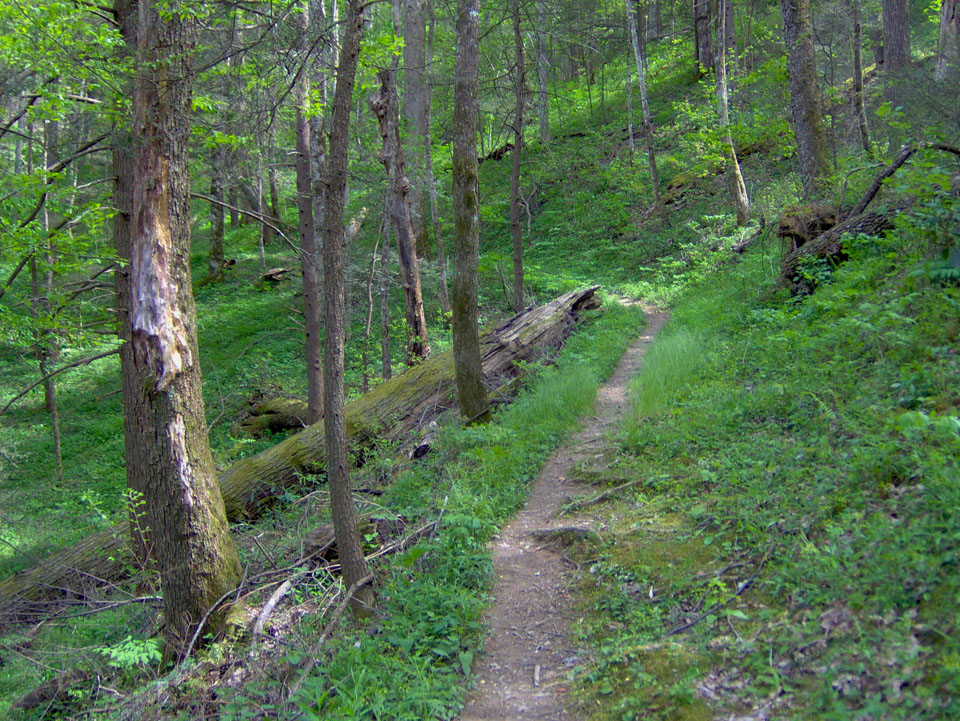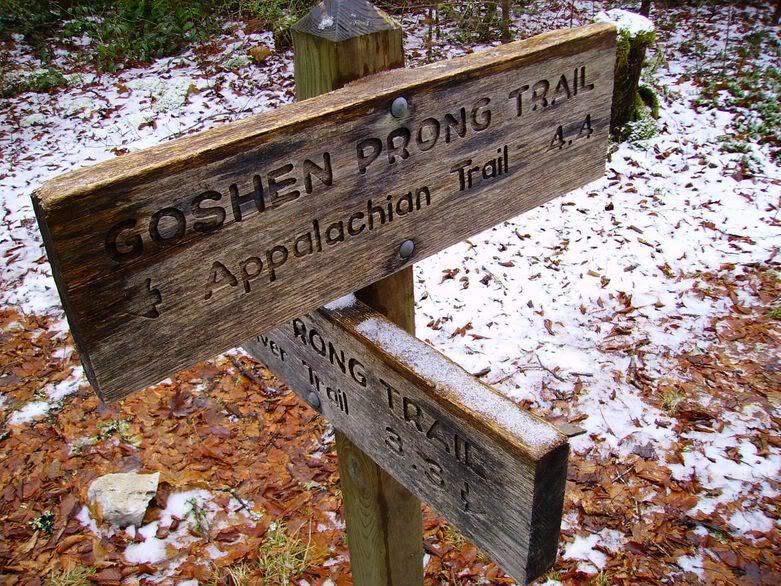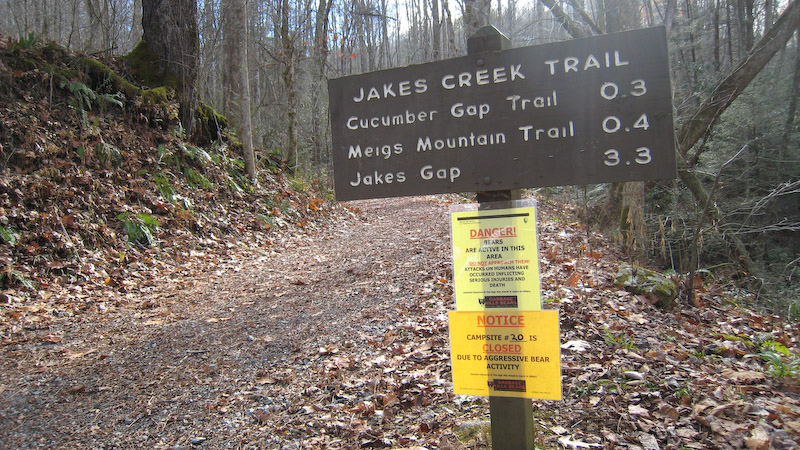A wildflower famous in and around the Great Smoky Mountains National Park, the flame azalea, is one of the highlights for people seeking out the Indian Grave Gap Trail – a 3.7 mile hike from Rich Mountain Road just outside Cades Cove to the junction of the Crooked Arm Ridge and the Scott Mountain trails…. And the views aren’t bad either.
As mentioned, to get to the trailhead take the Cades Cove Loop Road in Townsend, TN to Rich Mountain Road which is located right across Loop Road from the Cades Cove Missionary Baptist Church. From there it’s 2.2 miles up Cades Cove Mountain. You’ll also have to cross Tater Ridge and Branch, then the Indian Grave Gap Trail veers off the road to the right. At the trailhead there is a small parking area. And just so you know, Rich Mountain Road is usually closed from November-March.
Now, if you think that you’ll find a bunch of Indian Graves on the trail, fear not. No one really knows why it was named what it was, but there are no Indian Graves to be found. Only beautiful views of the Smokies.
However, numerous Indians did pass through these areas when the Cherokee outnumbered the European settlers, especially in the Cades Cove area. You’ll notice at the start of this trail there is a gate which which was used as access for jeeps at one time. You’ll make a moderate climb at the start of the trail before it descends to Indian Grave Gap. For the next mile, you’ll gain over 1,000 feet in elevation.
The next marking on the trail is the junction with the Rich Mountain Loop Trail. At that point you know you’re nearing the height of Tater Ridge and almost 1.1 miles on the trail. Take a look off to your right and you’ll see some great views of Cades Cove.
Continuing your climb, along this part of the hike you should notice the flame azalea’s and their bright orange blossoms that erupt in June and July. You’re now ascending Double Mountain which gets its name due to its twin peaks.
The Rich Mountain Trail is met at the 1.9 mile marker and to your left sits backcountry campsite No. 5 – about 100 yards from here. Ahead is Cerulean Knob, 0.3 mile further. The three-trail junction is reached at mile 3.7 and Crooked Arm will take hikers back down to Cades Cove. Happy hiking!
